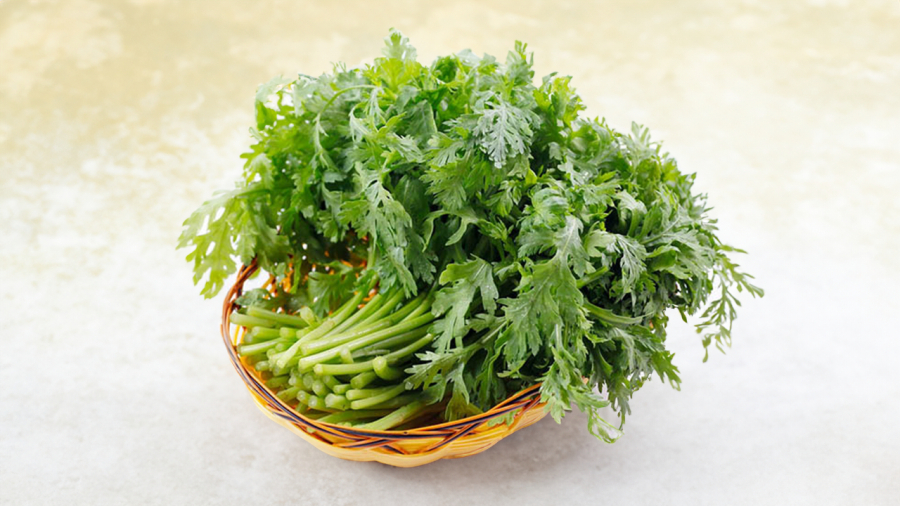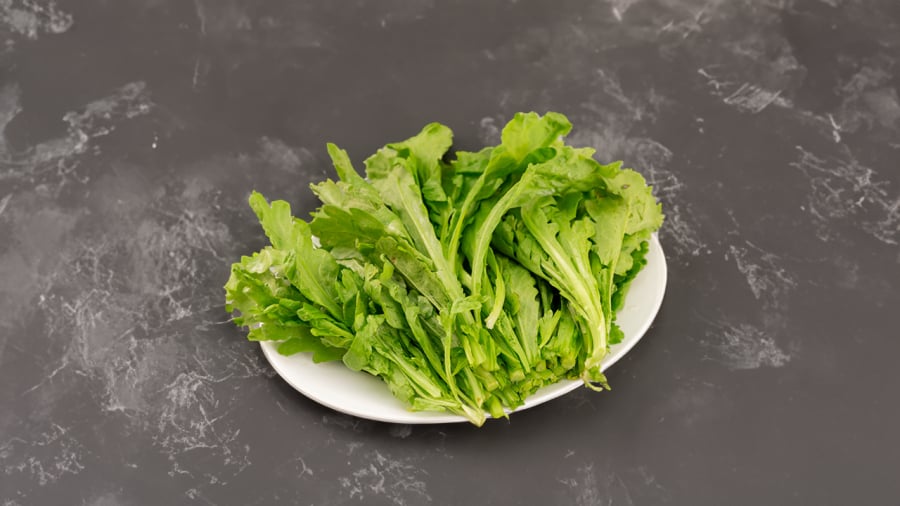Rau cải cúc, also known as tần ô vegetable, is a familiar vegetable in many households. It can be used to cook soups, hot pots, and more. Besides using the leaves and stems as vegetables, the flowers and roots of the plant can also be used for medicinal purposes.
Health benefits of rau cải cúc
– Liver protection, cooling effect
Rau cải cúc contains a high amount of carotene and amino acids that protect the liver. Additionally, it provides potassium, which helps repair and regulate damaged cells. It also promotes the metabolic function of the liver, ensuring its normal operation. Potassium also helps maintain the acid-base balance in the body. Including rau cải cúc in your diet is a simple way to supplement nutrition and provide liver protection and nourishment.

– Promotes bowel movement and digestion
Rau cải cúc is rich in dietary fiber, which aids in digestion, accelerates bowel movement, and reduces cholesterol levels in the body.
The volatile oils in rau cải cúc also support digestion, increase appetite, and enhance the taste of food.
– Boosts immune system
The nutrients in rau cải cúc provide various health benefits. Particularly, selenium in this vegetable helps improve the body’s immune system, preventing diseases and the invasion of bacteria and viruses.
– Relieves nerves and improves sleep quality
Rau cải cúc has a pleasant aroma and is rich in vitamins and amino acids that have calming effects, stabilize mood, and improve sleep quality. Moreover, it contributes to brain protection, prevents memory decline, and helps lower blood pressure.
– Relieves cold symptoms and treats cough

Rau cải cúc can be used as a remedy for cold and cough. Consuming rau cải cúc soup regularly is a simple way to relieve cough symptoms.
To treat a cold, you can take 150 grams of fresh rau cải cúc, wash and drain it, then put it into a bowl. Pour freshly boiled porridge into the bowl of rau cải cúc and let it sit for 5-10 minutes until the vegetables are cooked. Mix the vegetables and porridge well before consuming. This porridge provides quick and effective relief for cold symptoms.
Additionally, you can cook rau cải cúc with lean meat and crushed ginger, and consume it while hot to relieve cold symptoms.
– Increases milk supply after childbirth
Postpartum women can consume rau cải cúc soup with lean meat to enhance milk production and provide more milk for breastfeeding.
Who should avoid consuming rau cải cúc
Although rau cải cúc is rich in nutrients and offers several benefits to the body, there are a few points to consider when preparing and consuming it.
Individuals with diarrhea or abdominal pain should avoid eating rau cải cúc as it has a cooling nature and contains a high amount of water. Consuming rau cải cúc during episodes of diarrhea or abdominal pain can worsen the condition.
Individuals with low blood pressure should limit their intake of rau cải cúc as it may cause a drop in blood pressure.
Prior to cooking, it is important to thoroughly wash rau cải cúc. Note that the stems of rau cải cúc are relatively tender, so they should be washed gently to avoid crushing and nutrient loss.
Even for individuals in good health, it is recommended to consume an appropriate amount of rau cải cúc, around 100-150 grams per serving, and not exceed 3-4 times per week.



































